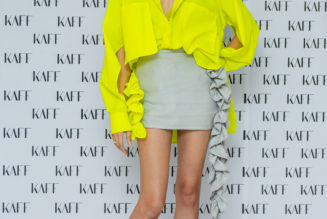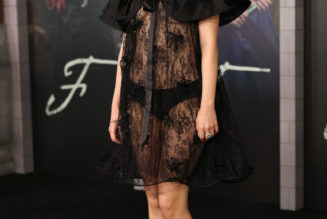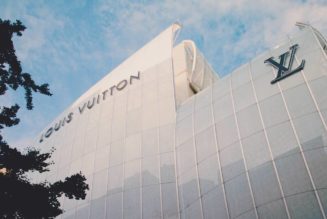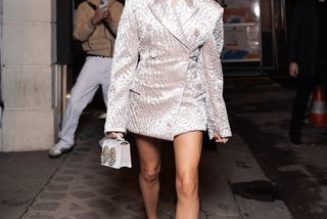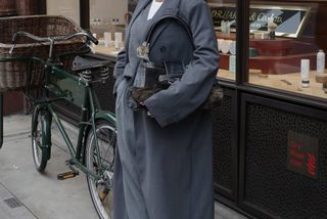
MILAN — After the oceans, Prada is tackling outer space.
Prada is collaborating with Axiom Space, the architect of the world’s first commercial space station, on NASA’s lunar space suits for the Artemis III mission.
This is a groundbreaking partnership between an Italian luxury fashion house and a commercial space company.
As the first crewed lunar landing since Apollo 17 in December 1972, the Artemis mission, planned for 2025, will also be the first to place a woman on the moon.
Michael Suffredini, chief executive officer of Axiom Space, enthused about the partnership with Prada on the Axiom Extravehicular Mobility Unit, or AxEMU, space suit, touting the brand’s “technical expertise with raw materials, manufacturing techniques and innovative design concepts,” which “will bring advanced technologies instrumental in ensuring not only the comfort of astronauts on the lunar surface, but also the much needed human factors considerations absent from legacy space suits.”
In a joint interview with Suffredini, Lorenzo Bertelli, Prada Group’s marketing director, said the project is in a “preliminary phase,” explaining that Suffredini’s team had been in Italy for a week to gain an understanding of Prada’s “capabilities, not just about fabrics. We have huge know-how since the ‘90s on the America’s Cup [with the Luna Rossa sailing team], on the composite framework. Space suits are a combination of a lot of materials, metal composites and fabrics and being able to put together all those materials in a holistic approach is not simple. We need to understand the priorities, and make sure we deliver what is being requested by Axiom.”
“Some of my guys went to the Prada show [last month], this set a very high bar till next time some of us come over,” joked Suffredini.
Bertelli has put together a team, including engineers, who will work with Axiom throughout the design process.
“In general, space suits are one of the most challenging things, for a very small environment, and we have to create an environment where humans live in, provide oxygen and remove CO2,” explained Suffredini. “It’s not as simple as an air conditioner turned on, air has to flow a certain way in the suit, you have to provide air from the top to the bottom, you have to cool the subject and there’s a lot that goes on inside the suit — and then of course the outer portion and you have to hold pressure in the suit. The crew person has to be mobile, so there has to be a different pressure, in and out, which makes it like operating in a big balloon.”
Together, Prada and Axiom have to create a suit that is flexible from the inner layer to the outer one, mindful of how the life support system operates, he continued. “It’s a very critical part of human space flight and one of the most challenging areas, and so every part, including even when we talk of fabrics, every layer is critical, if it isn’t critical it wouldn’t be there. We don’t have it for fun. While we look forward to the space suit to look unique, relative to the past, it is very critical, perhaps even more on the lunar surface than in the lower orbit.”
Prada will develop both suits and the dedicated team will grow “according to the needs of Axiom,” said Bertelli. “Our first objective is to create something that is safe because we put humans inside and then to deliver on time and with the right quality that is expected of us. There is a lot of work to be done, it’s a long road ahead, we will work hard step by step.”
Axiom Space operates end-to-end missions to the International Space Station today while developing its successor, Axiom Station — a permanent commercial destination in low-Earth orbit that will sustain human growth off the planet.
The AxEMU space suit will provide astronauts with advanced capabilities for space exploration, while offering NASA commercially developed human systems needed to access, live and work on and around the moon.
Prada’s research in fabrics for Luna Rossa trickled down to the group’s fashion, and asked if he could envision this project having the same effect, Bertelli said he was more focused at this stage on thinking long-term. “Our biggest effort is making sure we under-promise and over-deliver. Our first goal is to meet Axiom’s expectations. With Mike’s experience and NASA there is so much we can learn from them.”
He observed that the experience of the America’s Cup contributed to creating Prada’s “credibility in technical materials, and we look at this as an opportunity to expand our technical credibility even more for the future 20 years. It proves that our choice in the ‘90s was right and this today will pay off in 20 years.”
Suffredini said the collaboration was based on the belief that Prada could deliver both in terms of design and manufacturing. “It’s one thing to decide what to design and create something cool on paper, but the question is, is the product safe and reliable, did you actually build what you thought you were building.” Everything is “key to keep the crew alive.” Choosing a partner is not a decision that could be taken lightly, continued Suffredini, “given the significance of the suit.”
“Usually in fashion, the clothes are maybe on top of people, maybe,” said Bertelli, with a chuckle, “and you don’t have technical constraints, while with technical functionality it’s much different. We’ve seen this with our products for the America’s Cup, most of the design choices are driven by technical needs. Our first objective and priority is to follow technical needs and design accordingly but there is always a bit of room for a holistic look and feel. Technical also drives design, while in fashion first there is creativity and then technical needs follow.”
The space suit designs will be developed for “a very broad range of human beings to make sure we can accommodate just about any astronaut that has been selected,” said Suffredini. “One of the challenges is to keep the crew member cool, it gets quite hot,” so it’s likely the space suit will be “a version of white,” with some small elements of color.
This is an example “of technical constraints over aesthetical choices,” noted Bertelli.
“We constantly look for teaming partners. What’s interesting about Prada is that it’s not just a fantastic, worldwide recognized design house, but their technological advances and composites in other areas make it a very attractive company,” said Suffredini. “For us figuring out that Prada is bigger than just a design house was a natural for the space suits and while of course we’d all like to have their efforts in the design and see what they will look like, really it’s much more about other things, tech advances, how you design and build composites. This all makes Prada a big asset for the project.”


